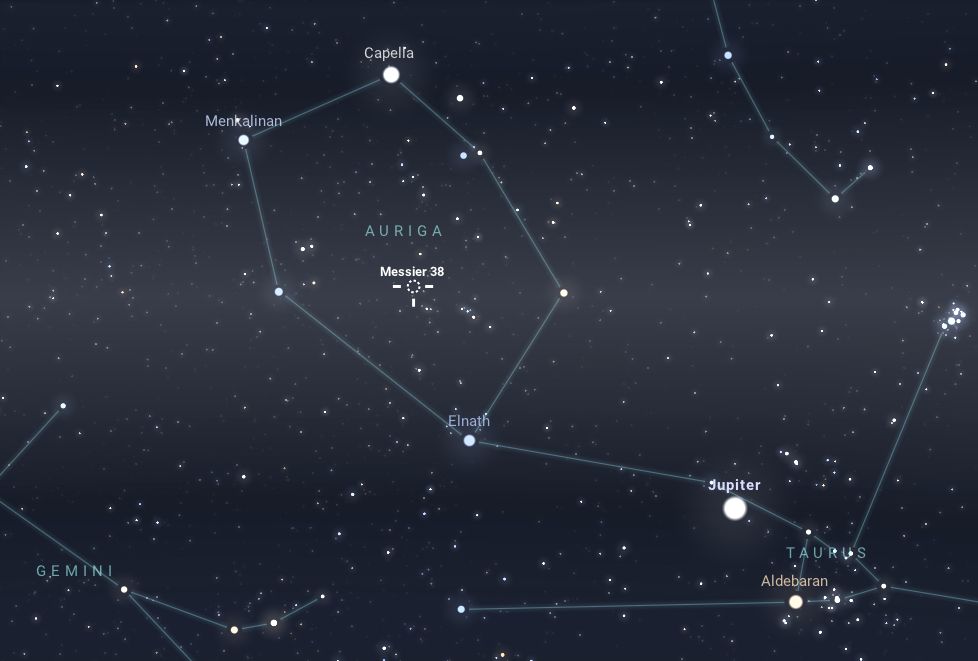M38, also known as the Starfish Cluster, is an open star cluster located in the constellation Auriga in the Northern Hemisphere. It lies approximately 4,200 light-years from Earth, situated in the Orion Arm, one of the smaller spiral arms of the Milky Way
Discovered by the Italian astronomer Giovanni Battista Hodierna before 1654, M38 was later independently rediscovered by Charles Messier in 1764, who included it in his catalogue of deep-sky objects as Messier 38.
Physical Characteristics
M38 is an open star cluster, similar to its neighbouring clusters M36 and M37. It contains hundreds of stars, predominantly young, hot, blue stars, along with a few cooler, redder stars. The cluster is estimated to be around 220 million years old, making it older than M36 but younger than M37.
The cluster’s distinctive shape resembles a starfish or a prominent asterism, with several bright stars forming the “arms” of the cluster. It spans about 20 arcminutes in the sky, approximately two-thirds the size of the full Moon, making it a moderately large and visually striking object.
Observation
With an apparent magnitude of 7.4, M38 is not visible to the naked eye but can be easily observed with binoculars or a small telescope.
The best time to observe M38 is during the winter months in the Northern Hemisphere (typically from November to February), when Auriga is well-positioned in the evening sky. It can be located using a star chart or an astronomy app, and it is a popular target for amateur astronomers due to its unique appearance and relatively easy visibility.




